WW1 Memorials: A War Memorial Guide
The War Graves Commission was founded in 1917 while the Great War was still being fought. Today, we maintain war cemeteries and memorials at more than 23,000 locations in over 150 countries and territories around the world. Over half of the more than 1.7 million service personnel of both World Wars we commemorate have no known grave and are commemorated by name on a memorial to the missing.
The Missing of WW1
By the end of WW1 the Commission estimated that of the ‘million war dead’ of the British Empire, only half had a known identified grave. The rest were ‘missing’: their bodies had not been recovered; their graves had been unrecorded, lost or destroyed by battle; buried or lost at sea; or their remains could not be identified and had been buried beneath a headstone bearing the inscription, ‘Known Unto God’.
Memorials to the Missing
For the loved ones of the missing there was nowhere to visit, no headstone to see, no grave to lay flowers on, no focal point for grief. The Commission was committed to commemorating every fallen individual and in the immediate aftermath of the Great War the issue of commemorating the missing was discussed at length and several different options were discussed.
In the early 1920’s the Commission decided that those with no known grave would be commemorated on special memorials to the missing. Each member government of the Commission – Australia, Canada, India, New Zealand, South Africa, and the United Kingdom – made slightly different choices about where and how their missing would be commemorated but each agreed that where possible every individual should be commemorated by name on a memorial somewhere. Over the next twenty years the Commission designed and built over 120 memorials to missing, with the last being unveiled in 1938, just a year before the outbreak of the Second World War.
The WW1 Memorials that commemorate the most casualties are:
- Thiepval Memorial: 72,173 casualties
- Ypres (Menin Gate) Memorial: 54,357 casualties
- Basra Memorial: 40,605 casualties
- Tower Hill Memorial: 35,830 casualties
- Tyne Cot Memorial: 34,941 casualties

Reading the names on the Menin Gate memorial
WW1 Memorials on the Western Front
Some of the most iconic and well known CWGC Memorials stand in France and Belgium, following the trenches of the Western Front.
WW1 Memorials to the Missing in France

THE THIEPVAL MEMORIAL - United Kingdom and South Africa
The CWGC Thiepval Memorial is the largest WW1 Commonwealth war memorial in the world and bears the names of more than 72,000 United Kingdom and South African servicemen who have no known grave. Thiepval is one of 9 sector war memorials in France that commemorate United Kingdom and South African service personnel. Each of these memorials commemorate those who died during a particular period and in a particular area of the conflict. Thiepval, for example, commemorates those who died on the Somme battlefields from August 1915 to 20 March 1918.
Next to the memorial is Thiepval Anglo-French Cemetery which contains equal numbers of British and French casualties, cementing the links between the British and French Military forged on the Somme battlefield.

THE VIMY MEMORIAL - Canada
The Vimy Memorial is the focal point of Canadian remembrance of WW1. Unlike the United Kingdom and South African Governments, Canadian officials decided that their missing who died in France would be commemorated on a single memorial. Built on the highest point of Vimy Ridge, where Canadian forces won a famous victory in 1917, the Vimy Memorial bears the names of over 11,000 missing Canadian service personnel and is dedicated to all those who served with Canadian forces during WW1 and all those who lost their lives.

THE VILLERS-BRETONNEUX MEMORIAL - Australia
The Villers-Bretonneux Memorial commemorates over 10,000 Australian service personnel who died in France during WW1 and have no known grave. Like the Canadian Government, Australian officials decided that their missing who died in France would also be commemorated on a single memorial. The Villers-Bretonneux Memorial was designed by Sir Edwin Lutyens and was built near where Australian forces won a famous victory in 1918.

THE NEUVE-CHAPELLE MEMORIAL - Undivided India
Like the Canadian and Australian governments, officials of Undivided British India decided that the missing of Indian forces who died in France would be commemorated on a single memorial. The location of the memorial was specially chosen as it was at Neuve Chapelle in March 1915 that the Indian Corps fought its first major action as a single force. The memorial commemorates more than 4,700 servicemen of undivided Indian forces and takes the form of a sanctuary enclosed within a circular wall after the manner of the enclosing railings of early Indian shrines. The memorial was designed by Sir Herbert Baker.

THE CATERPILLAR VALLEY MEMORIAL - New Zealand
The Caterpillar Valley Memorial commemorates over 1,200 New Zealand personnel who died in the Somme area during WW1 and have no known grave. It is the largest New Zealand Memorial to the missing anywhere in the world. New Zealand took a unique approach to the commemoration of their missing, opting to commemorate their missing on a number of smaller memorials built in cemeteries close to where the dead were known to have gone missing. Four New Zealand memorials were built in CWGC cemeteries in France – Caterpillar Valley, Cite Bonjean, Grevillers, and Marfaux. These cemeteries all have a high number of New Zealand unknown soldiers buried within them.

THE BEAUMONT-HAMEL (NEWFOUNDLAND) MEMORIAL - Newfoundland
Today, Newfoundland is part of Canada, but during WW1 Newfoundland was a separate dominion of the British Empire. Unlike the other member governments, Newfoundland officials decided to commemorate all the missing of all their forces, no matter when or where they died, on a single memorial, including sailors who died at sea. The Beaumont-Hamel Memorial is located in the Newfoundland Memorial Park in France, a location of great significance to Newfoundland forces, and commemorates over 800 missing Newfoundlanders.
WW1 Memorials to the Missing in Belgium
YPRES (MENIN GATE) MEMORIAL - United Kingdom, Australia, Canada, South Africa and India
The Ypres (Menin Gate) Memorial is perhaps the most famous war memorial in the world. Designed by Sir Reginald Blomfiled, the Memorial commemorates more than 54,000 service personnel of United Kingdom, Australian, Canadian, South African and Indian forces who died in the Ypres Salient, the area around the Belgian town of Ypres (today Ieper), throughout the entire period of WW1. Every night the Last Post is played under the gate in remembrance of those who fought and died.

TYNE COT MEMORIAL - United Kingdom and New Zealand
Around the eastern boundary of Tyne Cot Cemetery stands the Tyne Cot Memorial. Designed by Sir Herbert Baker, the memorial bears the names of 35,000 servicemen of United Kingdom and New Zealand forces, nearly all of whom died between August 1917 and November 1918 and have no known grave.

PLOEGSTEERT MEMORIAL - United Kingdom and South Africa
Located near the French-Belgian border, the Ploegsteert Memorial commemorates 11,000 servicemen of the United Kingdom and South African forces who died in this area and have no known grave. Designed by Harold Bradshaw with sculpture by Gilbert Ledward, most of the men commemorated on this memorial did not die in major offensives, such as those which took place around Ypres to the north, or Loos to the south, but in the course of the day-to-day trench warfare which characterised this part of the line.

MESSINES RIDGE (N.Z.) MEMORIAL - New Zealand
This is one of three memorials to the missing in Belgium which list the names of New Zealand soldiers who have no known grave. All three are located in cemeteries close to where the dead were known to have gone missing and which contain large numbers of New Zealand burials. Designed by the architect Charles Holden, the Messines Ridge (N.Z.) Memorial stands at the entrance to Messines British Cemetery and commemorates over 800 New Zealand soldiers who died in the Messines area during WW1.
WW1 Memorials to the Missing in the UK
The Naval Memorials
More than 45,000 men and women died while serving with the Royal Navy during WW1. The majority were lost at sea and have no known grave. When someone joined the Royal Navy they were allocated to a particular ‘manning port’ for administrative purposes. After WW1 memorials commemorating the missing of the Royal Navy were built in each of the manning port towns of Plymouth, Chatham and Portsmouth to commemorate the missing.
The Tower Hill Memorial
This memorial commemorates almost 12,000 personnel of the Mercantile Marine, the Fishing Fleets, and the lighthouse and pilotage services who died during WW1. Built in the heart of London, overlooked by the Tower of London and the River Thames, Tower Hill memorial was designed by Sir Edwin Lutyens, with sculpture by Sir William Reid-Dick. It was unveiled by HRH Queen Mary on 12 December 1928.
The Brookwood 14-18 Memorial
Unveiled in 2015, the Brookwood 1914-1918 Memorial records the names of over 260 service personnel of United Kingdom, Australian, Canadian, South African and Indian forces who died in the United Kingdom during WW1 but whose graves cannot now be located and marked.
The Hollybrook Memorial
The Hollybrook Memorial commemorates almost 1,000 servicemen of the army and air forces who died in seas around the United Kingdom during the First World war and have no known grave. Amongst the names are hundreds of South African Native Labour Corps volunteers and Field Marshal Lord Kitchener, Secretary of State for War.
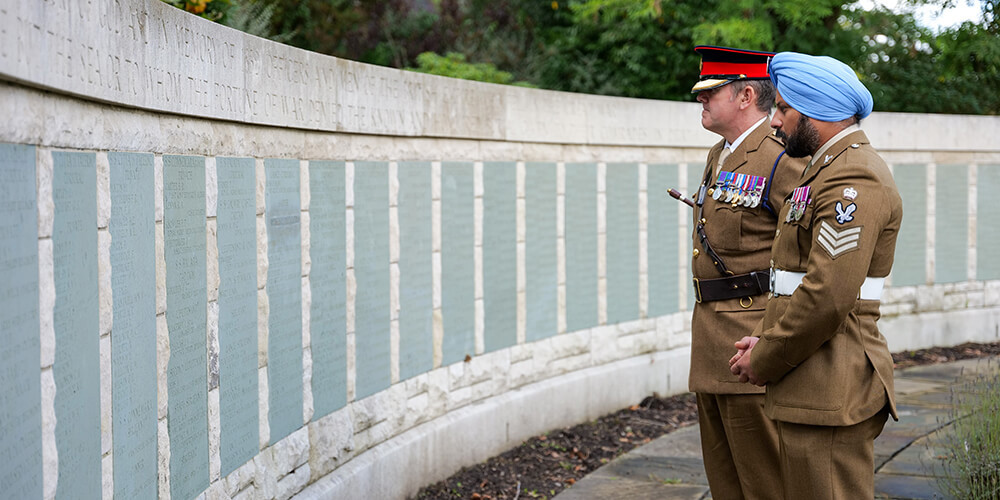
Reading the names at Hollybrook Memorial
WW1 Memorials around the World
WW1 Memorials to the Missing on Gallipoli
Helles Memorial
The Helles Memorial commemorates almost 21,000 service personnel of United Kingdom and Indian forces who died on the Gallipoli Peninsula, and Australians who died in the Helles Sector, during the Gallipoli Campaign in 1915-1916 and have no known grave. The memorial was designed by Sir John Burnet and was officially dedicated in 1924.
Lone Pine Memorial
The Lone Pine Memorial commemorates almost 5,000 Australian and New Zealand servicemen who died in the ANZAC and Suvula Bay sectors during the 1915 Gallipoli Campaign. The memorial stands on important high ground where there was desperate fighting in 1915. The memorial was designed by Sir John Burnet and construction was completed in 1925.
Chunuk Bair (New Zealand) Memorial
This is one of four memorials on the Gallipoli Peninsula where the missing of New Zealand forces are commemorated. More than 852 New Zealand servicemen are commemorated on the Chunuk Bair Memorial. They died in during heavy fighting in the area immediately surround where the memorial now stands, but particularly during the Battle of Sari Bair in August 1915.
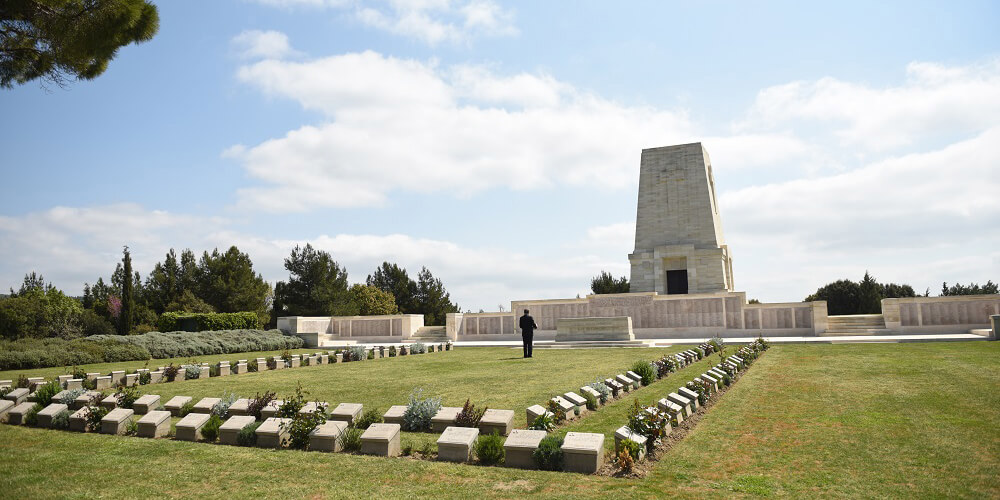
Wreath laying at Lone Pine Memorial
WW1 Memorials to the Missing in the Middle East
Across the Middle East the Commission built and today maintains four WW1 memorials to the missing.
Basra Memorial
The Basra Memorial was designed by Edward Warren and unveiled by Sir Gilbert Clayton on the 27th March 1929. It commemorates more than 40,500 British, Indian, Australian, New Zealand and Canadian service personnel who died in the operations in Mesopotamia (Iraq) from the Autumn of 1914 to the end of August 1921 and have no known grave. Whilst the current climate of political instability persists it is extremely challenging for the Commission to maintain its cemeteries and memorials located within Iraq. Alternative arrangements for commemoration have therefore been implemented and a two volume Roll of Honour listing all casualties buried and commemorated in Iraq has been produced. These volumes are on display at the Commission's Head Office in Maidenhead and are available for the public to view in person and online.
Jerusalem Memorial
The Jerusalem Memorial commemorates more than 3,300 service personnel of United Kingdom, Australian, Canadian, South African, and Indian forces who died during WW1 in the near east and have no known grave. The memorial was designed by Sir John Burnet, with sculpture by Gilbert Bayes. In addition, the interior of the memorial chapel is decorated with a magnificent mosaic, commissioned by the New Zealand Government, and designed by Robert Anning Bell. The Memorial was unveiled on 7 May 1927 by Lord Allenby who led British forces in the region during the First World War.
Tehran Memorial
The Tehran Memorial commemorates almost 3,600 casualties of Indian, United Kingdom and New Zealand Forces who died during WW1 in Persia (today Iran) and some neighbouring regions of the Russian Empire and have no known grave.
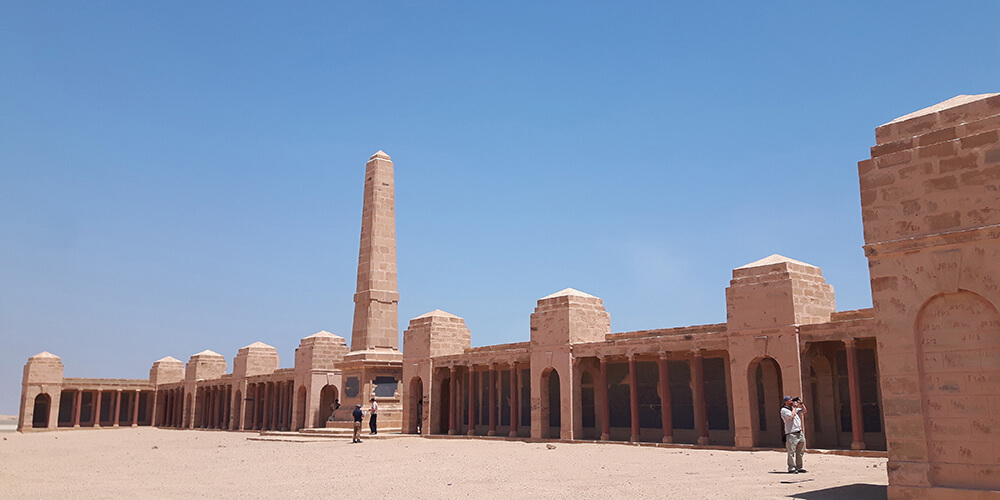
Basra Memorial in Iraq
WW1 Memorials to the Missing in Africa
Dar Es Salaam British and Indian Memorial
The Dar Es Salaam British and Indian Memorial stands within Dar es Salaam War Cemetery, and commemorates more than 1,500 British, Indian and South African servicemen who died in East Africa during and after January 1917 who have no known grave. Those killed before January 1917 are commemorated on the Nairobi British and Indian Memorial in Kenya.
Dar Es Salaam African Memorial
The Dar Es Salaam African Memorial is one of three memorials built to commemorate East African soldiers and carriers of World War One. During the war 34,000 African combatant troops were raised, while 600,000 Africans served as non-combatant porters, stevedores, and followers of the Military Labour Corps. Between 50,000-300,000 of these men were lost, killed in action, or died of sickness or wounds. No complete records of their service or even names are known to exist, and so no names appear on these memorials.
All three memorials were designed by James Alexander Stevenson. The Dar Es Salaam African memorial takes the form a bronze figure representing an Askari of the King’s African Rifles, while two bronze reliefs affixed to the base of the memorial depict the work of the Intelligence Corps and the Carrier Corps. Two similar memorials, though with differing sculpture, stand in Nairobi and Tanzania to commemorate servicemen from across East Africa.
Abuja Memorial
The Abuja Memorial commemorates almost 950 servicemen who died while serving with the Nigerian Carrier Corps and the Inland Water Transport of the Royal Engineers during WW1 and have no known grave. This memorial has taken several forms and been in a number of locations since the original Lagos memorial was erected in 1932. The current memorial, which stands in the Nigerian National Military Cemetery, was dedicated in 2016 and commemorates over 2,100 Nigerian service personnel who died during WW1 and WW2 and have no known grave.
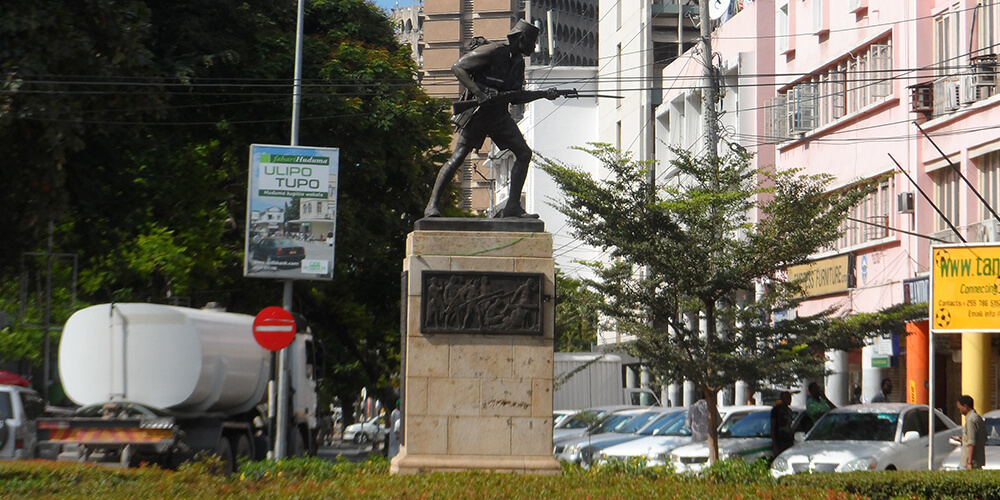
Dar Es Salaam African Memorial
WW1 Memorial to the Missing in India and the Far-East
Delhi Memorial (India Gate)
The Delhi Memorial is perhaps one of the most famous and well visited Commission memorials in the world. Located in the heart of New Delhi, the memorial commemorates by name over 13,200 service personnel who died during WW1 while serving in India and across the frontiers including in Afghanistan. Just over 1,000 lay in cemeteries in Pakistan, where maintenance was not possible. The remainder died in fighting on or beyond the North West Frontier and during the Third Afghan War, and have no known grave. The Delhi Memorial also acts as a national memorial to all the 70,000 soldiers of undivided India who died during the years 1914-1921, the majority of whom are commemorated by name outside the confines of India.
Bombay 1914-1918 Memorial
Like the memorials at Plymouth, Portsmouth, Chatham and Tower Hill, some of our largest WW1 memorials commemorate the naval and merchant navy casualties who lost their lives during the war. The Bombay 14-18 Memorial commemorates more than 2,200 Indian, Adenese and East African sailors and merchant seamen who died during WW1 and have no known grave.
Kirkee 1914-1918 Memorial
The Kirkee 1914-1918 Memorial was built to commemorate more than 1,800 World War One casualties who died in Indian and Pakistan. Many of these are servicemen and women who were buried in civil cemeteries and cantonments that due to a mixture of circumstances became unmanageable. Over the years, CWGC have been working to restore the original burials of these casualties, with over 1,000 now commemorated in their original burial place.
Hong Kong Memorial
The Hong Kong memorial originally commemorated all Chinese casualties of World War One, but bore no names, many of whom served in the Chinese Labour Corps on the Western Front and are buried there. Others served with the Merchant Navy or with units like the Royal Engineers and the Port Administration and River Conservancy Department and so have no known grave. A new memorial was erected in 2006 and bears the names of 941 WW1 casualties recruited from Hong Kong and China.
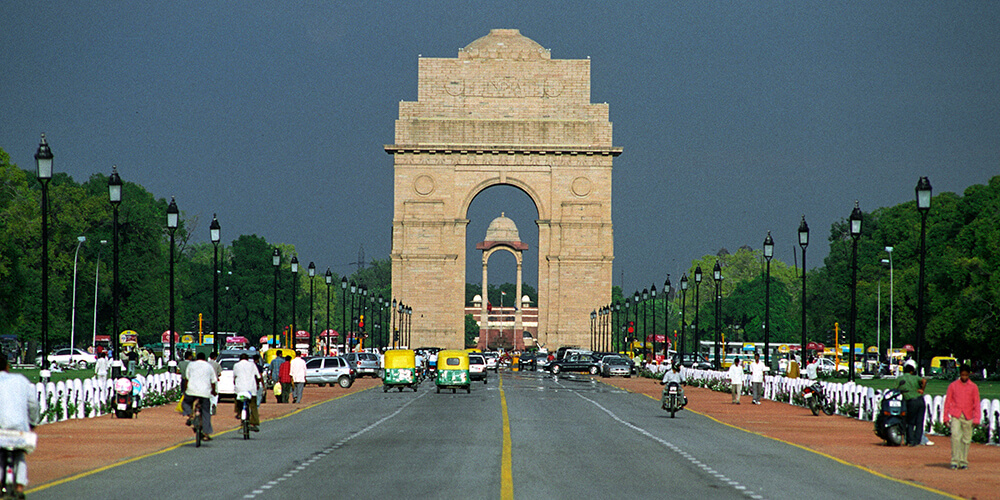
Delhi Memorial (India Gate)
Is there a memorial to the soldiers of World War 1?
The Unknown Warrior
While not a traditional Memorial to the Missing, the tomb of the Unknown Soldier is one of the most famous memorials to the casualties of WW1.
Buried in a coffin of English oak, in French soil and with a slab of Belgian marble marking his place, the unknown warrior commemorates “the many multitudes who during the Great War of 1914-1918 gave the most that man can give”.
The anonymity of the Unknown Soldier means that, as well as being the grave of a single man, he becomes a memorial to all of the fallen of World War One, and all conflicts before and after.
While responsibility for his tomb and the tombs of the other unknown warriors in Australia, Canada, South Africa and New Zealand does not lie with us, we are responsible for the remains buried within them.
Best WW1 Memorials to the Missing to visit now
Where possible, all of our sites around the world have remained open to the public throughout the Covid-19 pandemic. We strongly recommend to any visitors that they research and follow the advice of the local authorities whenever they visit our cemeteries and memorials.
Currently, the Thiepval Memorial to the Missing is undergoing a major restoration project. As part of this project, we have installed a free-to-use digital exhibition In the Shadow of Thiepval where visitors can learn more about the memorial and the landscape around it, the Battle of the Somme and the 72,000 names commemorated there.
Find WW1 Memorials Near Me
Are you ready to explore some of the fascinating World War One Memorials near you? Our database contains over 23,000 war memorials, cemeteries and grave locations, in more than 150 countries and territories around the world.
WW1 memorial name search
Use our war dead records search tool to find the names and final resting places of the men and women of the Commonwealth who lost their lives during the First World War.
War memorial records WW1
Or search our war memorials and war cemeteries database to find visiting information at both local sites and commemorative locations across the globe.




